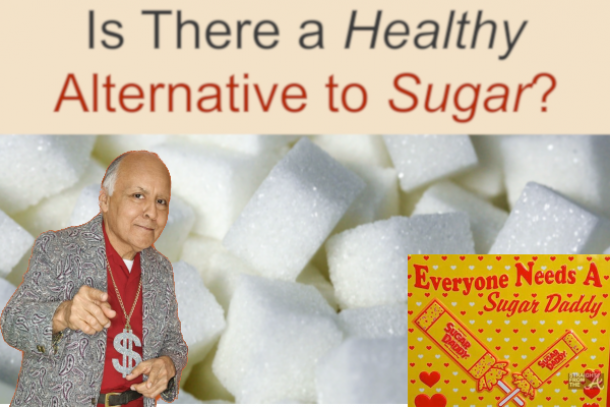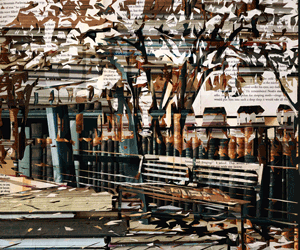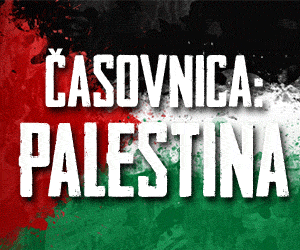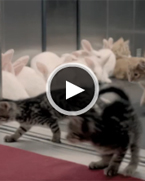Sweet Sugar
How to Eat Less Sugar
Sugar
Background
Before the birth of Jesus of Nazareth, sugarcane (from which sugar is made) was harvested on the shores of the Bay of Bengal; it spread to the surrounding territories of Malaysia, Indonesia, Indochina, and southern China. The Arabic people introduced "sugar" (at that point a sticky paste, semi-crystallized and believed to have medicinal value) to the Western world by bringing both the reed and knowledge for its cultivation to Sicily and then Spain in the eighth and ninth centuries. Later, Venice—importing finished sugar from Alexandria—succeeded in establishing a monopoly over this new spice by the fifteenth century; at that point, it started buying raw sugar, and even sugarcane, and treating it in its own refineries. Venice's monopoly, however, was short-lived. In 1498, Portuguese to five percent moisture) in a cool and relatively moist atmosphere, so that they continue to retain their moisture and do not become hard.
Most granulated sugars comply with standards established by the National Food Processors Association and the pharmaceutical industry (U.S. Pharmacopeia, National Formulary).
Where To Learn More
Books
Clarke, M. A., ed. Chemistry & Processing of Sugarbeet & Sugarcane. Elsevier Science Publishing Co., Inc., 1988.
Hugot, E. Handbook of Cane Sugar Engineering. 3rd ed. Elsevier Science Publishing Co., Inc., 1986.
Lapedes, Daniel, ed. McGraw Hill Encyclopedia of Food, Agriculture and Nutrition. McGraw Hill, 1977.
McGee, Harold. On Food and Cooking: The Science and Lore of the Kitchen. Collier Books, 1984.
an have 22g of sugar in it! That’s the same as eating five and a half teaspoons of sugar!
Other foods likely to be high in sugar include cereals, canned products, juice and canned fruits, flavored dairy products (like yogurt), microwaveable or other ready-made meals, and sodas.
If possible, eat non-packaged or canned products. For example, instead of a sugar heavy cereal for breakfast, make old fashioned oatmeal and add fruit to make it sweeter.
[Image titled 279030 4]
4
Recognize and avoid sugar aliases. [6] Nutrition labels include a list of ingredients that often call sugar by different names. Know the different aliases for sugar so you can avoid sugar-heavy foods. Ingredients that end in “ose,” like glucose, sucrose, fructose, lactose, dextrose, or maltose, are all forms of sugar. Other common aliases include:
High fructose corn syrup
Corn syrup
Molasses (Blackstrap molasses is better.—It has had much of the sugar removed as crystals.)
Invert, brown, or raw sugar
Corn sweetener
Syrup
Part2
Altering Your Diet
[Image titled 279030 5]
1
Limit your carbohydrate intake. Some people choose to cut sugary, carbohydrate-rich foods like white rice, bread, pasta, and potatoes out of their diet completely. If that seems too drastic, you can keep them in your diet, but make sure to eat them in moderation. These foods draw you into a cycle of sugar cravings by causing a sudden sugar spike in your system. Your body releases a large amount of insulin to manage the spike, which then causes your blood sugar levels to drop. This, in turn, makes your body crave more sugar, restarting the cycle.[7]
The “white” varieties of bread, rice, and pasta are the most dangerous. In place of simple carbohydrates, incorporate complex carbohydrates like sweet potatoes, quinoa, and oats, whole grain bread, brown rice, and whole grain pasta.[8]
[Image titled 279030 6]
2
Cook your own meals. When you eat out, you have only a limited idea what's going into your meals. When you cook for yourself, you have complete control over what goes into your body. Cook natural products like vegetables, fruits, meats, and grains from scratch rather than preparing boxed meals.
When you eat out, don't feel uncomfortable making special requests. You can ask for your meat grilled instead of fried and your vegetables steamed instead of sautéed in oils.
You can use an online nutrient calculator to make sure the ingredients you use in a given meal provide a balanced diet.[9] A balanced diet is really important. It is generally accepted that you should get the following macronutrient percentages:
40% of your calories from protein
40% from carbohydrates
20% from fat
If you actually track your macronutrient intake, you will likely notice that you aren't consuming nearly enough protein, and you are way high on carbohydrates and fat. Apps like My Fitness Pal help you to become aware of what you are putting into your body.
[Image titled 279030 7]
3
Replace refined sugars with natural ones. The sugars in most processed foods are bad for your health, but those found naturally in fruits and in vegetables come packaged with other health benefits. Replace your candy bar with nutrient-packed fruits like bananas and dates. Even when baking, you can replace sugar with fruits! Puree bananas, cooked apples, or cooked butternut squash to sweeten your cakes, ice creams, or smoothies.[10] Many fruits can be baked to make them dessert-like. For example, you can bake an apple and then add cinnamon. And in many packaged cake, cookie, and brownie mixes, you can often substitute apple sauce for some of the ingredients to make it lighter.—Just make sure to check the nutrition label to ensure that the apple sauce has no added sugar.
[Image titled 279030 8]
4
Cut fast food out of your diet. Even savory fast foods that don’t taste particularly sweet are often full of refined sugars. For example, a “grilled” or “charbroiled” chicken breast at a fast food restaurant likely achieves that taste with sugar.[11] Fast food chains try to achieve taste as quickly and cheaply as possible and almost always use sugar as a shortcut for good cooking. Instead, eat at a restaurant that spends a little more time on its food, or just cook your own meals at home.
navigator Vasco da Gama returned from India bringing the sweet flavoring to Portugal. Lisbon started to import and refine raw sugar, and, in the sixteenth century, it became the European sugar capital. It was not long before the sweetener was available in France, where its primary function continued to be medicinal, and during the reign of Louis XIV, sugar could be bought by the ounce at the apothecary. By the 1800s, sugar (though still expensive) was widely available to both upper and middle classes.
Raw Materials
Sugar is a broad term applied to a large number of carbohydrates present in many plants and characterized by a more or less sweet taste. The primary sugar, glucose, is a product of photosynthesis and occurs in all green plants. In most plants, the sugars occur as a mixture that cannot readily be separated into the components. In the sap of some plants, the sugar mixtures are condensed into syrup. Juices of sugarcane (Saccharum officinarum) and sugar beet (Beta vulgaris) are rich in pure sucrose, although beet sugar is generally much less sweet than cane sugar. These two sugar crops are the main sources of commercial sucrose.
The sugarcane is a thick, tall, perennial grass that flourishes in tropical or subtropical regions. Sugar synthesized in the leaves is used as a source of energy for growth or is sent to the stalks for storage. It is the sweet sap in the stalks that is the source of sugar as we know it. The reed accumulates sugar to about 15 percent of its weight. Sugarcane yields about 2,600,000 tons of sugar per year.
The sugar beet is a beetroot variety with the highest sugar content, for which it is specifically cultivated. While typically white both inside and out, some beet varieties have black or yellow skins. About 3,700,000 tons of sugar are manufactured from sugar beet.
Other sugar crops include sweet sorghum, sugar maple, honey, and corn sugar. The types of sugar used today are white sugar (fully refined sugar), composed of clear, colorless or crystal fragments; or brown sugar, which is less fully refined and contains a greater amount of treacle residue, from which it obtains its color.
The Manufacturing
Process
Planting and harvesting
1 Sugarcane requires an average temperature of 75 degrees Fahrenheit (23.9 degrees
[In the United States, harvesting of both cane and sugar beet is done primarily by machine, although in some states it is also done by hand. The harvested cane stalks and beets are loaded mechanically into trucks or railroad cars and taken to mills for processing into raw sugar. Once there, they are cleaned, washed, milled to extract juice, filtered, and purified. The result is a clear, sugar-filled juice.]
In the United States, harvesting of both cane and sugar beet is done primarily by machine, although in some states it is also done by hand. The harvested cane stalks and beets are loaded mechanically into trucks or railroad cars and taken to mills for processing into raw sugar. Once there, they are cleaned, washed, milled to extract juice, filtered, and purified. The result is a clear, sugar-filled juice.
Celsius) and uniform rainfall of about 80 inches (203 centimeters) per year. Therefore, it is grown in tropical or subtropical areas.
Sugarcane takes about seven months to mature in a tropical area and about 12-22 months in a subtropical area. At this time, fields of sugarcane are tested for sucrose, and the most mature fields are harvested first. In Florida, Hawaii, and Texas, standing cane is fired to burn off the dry leaves. In Louisiana, the six- to ten-feet (1.8- to 3-meter) tall cane stalks are cut down and laid on the ground before burning.
2 In the United States, harvesting (of both cane and sugar beet) is done primarily by machine, although in some states it is also done by hand. The harvested cane stalks are loaded mechanically into trucks or railroad cars and taken to mills for processing into raw sugar.
Preparation and processing
3 After the cane arrives at the mill yards, it is mechanically unloaded, and excessive soil and rocks are removed. The cane is cleaned by flooding the carrier with warm water (in the case of sparse rock and trash clutter) or by spreading the cane on agitating conveyors that pass through strong jets of water and combing drums (to remove larger amounts of rocks, trash, and leaves, etc.). At this point, the cane is clean and ready to be milled.
Meade, G. P. Cane Sugar Handbook: A Manual for Cane Sugar Manufacturers and Their Chemists. John Wiley and Sons, 1977.
Pennington, Neil L. and Charles Baker, eds. Sugar: A Users' Guide to Sucrose. Van Nostrand Reinhold, 1991.
Rost, Waverly. Food. Simon & Schuster, 1980.
Periodicals
"Sugar: Can We Make It On the Homestead?" Countryside & Small Stock Journal. May-June, 1987, p. 9.
Hayes, Joanne L. "Sugarloaf Lore," Country Living. March, 1989, p. 132.
"Squeezing All the Sweetness Out of Sugarcane—and More," Chemical & Engineering News. May 12, 1986, pp. 38-9.
— Eva Sideman
Read more: http://www.madehow.com/Volume-1/Sugar.html#ixzz5sNDFCcsV
Co-authored by Sami Skow, Certified Nutritionist
Updated: March 29, 2019
Explore this ArticlePreparing to Change Your DietAltering Your DietSticking to Your CommitmentArticle SummaryQuestions & AnswersRelated ArticlesReferences
Though we don't need refined sugars in our diet, humans seem hardwired to crave sweet foods. In fact, research suggests that sugar can act on the brain in the same way as addictive substances like tobacco![1] Unfortunately, the sugar we love is also the culprit in a wide range of diseases, from cavities and diabetes to fatigue and obesity. [2] Reducing sugar's role in your life can only benefit you and your loved ones.
Part1
Preparing to Change Your Diet
[Image titled 279030 1]
1
Set a sugar limit. You may only think about sugar when you add it to your recipes or coffee, but you likely eat large amounts of it without even thinking about it. Make a commitment to consciously count how many grams of sugar you eat on a daily basis, and limit your sugar to a healthy amount. The World Health Organization recommends eating no more than 25 grams of sugar per day — less than what’s found in a single soft drink.[3]
Pace your sugar intake throughout the day by eating foods with a moderate amount of sugar, rather than one sugary food and a lot of sugarless food.
Less than 5g of sugar per 100g serving of food is a good, low-sugar product.[4]
More than 15g of sugar per 100g serving of food is too high for healthy consumption.
If you are going to consume sugar, try to use healthy sugar alternatives like agave syrup, honey, coconut sugar, etc. Natural sugars (while still sugars) are much better for you.
[Image titled 279030 2]
2
Track your sugar. If you don't want to give up on all sugar, make a weekly chart to keep track of how much sugar you're eating. Decide how much sugar you are going to allow yourself to eat each day, remembering that you should eat no more that 25 grams, maximum.
For instance, on Mondays you might need an extra kick in your morning coffee, so you can allow yourself two sugars in it. If you have have plans to go out with friends on Saturday, allow yourself dessert.
You can decide how restricting or not your graph is.
[Image titled 279030 3]
3
Identify the sugar sources in your diet. Cut out or scale back on seemingly “healthy” foods that are actually adding large amounts of sugar to your diet. Look closely at the nutrition labels on all the food in your pantry to see how many grams of sugar they contain; four grams of sugar is equal to a teaspoon of granulated sugar. [5] Even the healthier foods you eat might have surprisingly high sugar contents!
For example, a small cup of packaged applesauce c
When the beets are delivered at the refinery, they are first washed and then cut into strips. Next, they are put into diffusion cells with
[After being purifed, the clear juice undergoes vacuum evaporation to remove most of the water. In this process, four vacuum-boiling cells are arranged in series so that each succeeding cell has a higher vacuum. The vapors from one body can thus boil the juice in the next one, a method called multiple-effect evaporation. Next, the syrupy solution is vacuum-crystallized to form sugar crystals. The remaining liquid is removed using centrifugaling and drying, and the sugar is packaged.]
After being purifed, the clear juice undergoes vacuum evaporation to remove most of the water. In this process, four vacuum-boiling cells are arranged in series so that each succeeding cell has a higher vacuum. The vapors from one body can thus boil the juice in the next one, a method called multiple-effect evaporation. Next, the syrupy solution is vacuum-crystallized to form sugar crystals. The remaining liquid is removed using centrifugaling and drying, and the sugar is packaged.
water at about 175 degrees Fahrenheit (79.4 degrees Celsius) and sprayed with hot water countercurrently to remove the sucrose.
12 Damp sugar crystals are dried by being tumbled through heated air in a granulator. The dry sugar crystals are then sorted by size through vibrating screens and placed into storage bins. Sugar is then sent to be packed in the familiar packaging we see in grocery stores, in bulk packaging, or in liquid form for industrial use.
Byproducts
The bagasse produced after extracting the juice from sugar cane is used as fuel to generate steam in factories. Increasingly large amounts of bagasse are being made into paper, insulating board, and hardboard, as well as furfural, a chemical intermediate for the synthesis of furan and tetrahydrofuran.
The beet tops and extracted slices as well the molasses are used as feed for cattle. It has been shown that more feed for cattle and other such animals can be produced per acre-year from beets than from any other crop widely grown in the United States. The beet strips are also treated chemically to facilitate the extraction of commercial pectin.
The end product derived from sugar refining is blackstrap molasses. It is used in cattle feed as well as in the production of industrial alcohol, yeast, organic chemicals, and rum.
Quality Control
Mill sanitation is an important factor in quality control measures. Bacteriologists have shown that a small amount of sour bagasse can infect the whole stream of warm juice flowing over it. Modern mills have self-cleaning troughs with a slope designed in such a way that bagasse does not hold up but flows out with the juice stream. Strict measures are taken for insect and pest controls.
Because cane spoils relatively quickly, great steps have been taken to automate the methods of transportation and get the cane to the mills as quickly as possible. Maintaining the high quality of the end-product means storing brown and yellow refined sugars (which contain two percent
Three out of every four teaspoons of sugar Americans eat is consumed through processed food.[12]
Eating out is often inevitable. It will happen from time to time. And, when it does, take the time to look up the menu of the restaurant ahead of time and decide what the healthiest option is. Your body will thank you.
[Image titled 279030 9]
5ary to the crushers. (In most countries, the shredder precedes the crusher.) A combination of two, or even all three, methods may be used. The pressing process involves crushing the stalks between the heavy and grooved metal rollers to separate the fiber (bagasse) from the juice that contains the sugar.
5 As the cane is crushed, hot water (or a combination of hot water and recovered impure juice) is sprayed onto the crushed cane countercurrently as it leaves each mill for diluting. The extracted juice, called vesou, contains 95 percent or more of the sucrose present. The mass is then diffused, a process that involves finely cutting or shredding the stalks. Next, the sugar is separated from the cut stalks by dissolving it in hot water or hot juice.
"Not only are we getting added sugar from obvious places like cakes, candy, and soda, but it's also coming from healthier-sounding packaged products like salad dressing, pasta sauce, and yogurt," says Elyse Powell, one of the report's coauthors and a doctoral researcher at UNC. (To be clear, by "added sugar" we're talking about the super-processed sweet stuff you'd add to a batch of cookies, not the natural sugars found in whole fruit, veggies, and plain milk.)
The big takeaway from that UNC report: Most of us could stand to cut back on sugar. The American Heart Association suggests women stick to 6 teaspoons or less of added sugar daily. That's roughly 25 grams, or 100 calories' worth, if you're checking food labels. (Lose up to 15 pounds WITHOUT dieting with Eat Clean to Get Lean, our 21-day clean-eating meal plan.)
[ften a great addition, even when they're overripe and good for little else!
For dessert, use fruit's natural sweetness without added sugar. Poached fruit is always delicious, sprinkled with a spice or served with vanilla custard that is sugar-free.
Add fresh, unflavored plain yogurt as a topping to a fruit salad. Other delicious choices include a baked apple or frozen berries.
Toasted sprout bread or some bagels with slices of fruit or a thin layer of sugar-reduced jam can be a hearty substitute for candy cravings.
Purification of juice — clarification
and evaporation
6 The juice from the mills, a dark green color, is acid and turbid. The clarification (or defecation) process is designed to remove both soluble and insoluble impurities (such as sand, soil, and ground rock) that have not been removed by preliminary screening. The process employs lime and heat as the clarifying agents. Milk of lime (about one pound per ton of cane) neutralizes the natural acidity of the juice, forming insoluble lime salts. Heating the lime juice to boiling coagulates the albumin and some of the fats, waxes, and gums, and the precipitate formed entraps suspended solids as well as the minute particles.
The sugar beet solution, on the other hand, is purified by precipitating calcium carbonate, calcium sulfite, or both in it repeatedly. Impurities become entangled in the growing crystals of precipitate and are removed by continuous filtration.
7 The muds separate from the clear juice through sedimentation. The non-sugar impurities are removed by continuous filtration. The final clarified juice contains about 85 percent water and has the same composition as the raw extracted juice except for the removed impurities.
8 To concentrate this clarified juice, about two-thirds of the water is removed through vacuum evaporation. Generally, four vacuum-boiling cells or bodies are arranged in series so that each succeeding body has a higher vacuum (and therefore boils at a lower temperature). The vapors from one body can thus boil the juice in the next one—the steam introduced into the first cell does what is called multiple-effect evaporation. The vapor from the last cell goes to a condenser. The syrup leaves the last body continuously with about 65 percent solids and 35 percent water.
The sugar beet sucrose solution, at this point, is also nearly colorless, and it likewise undergoes multiple-effect vacuum evaporation. The syrup is seeded, cooled, and put in a centrifuge machine. The finished beet crystals are washed with water and dried.
Crystallization
9 Crystallization is the next step in the manufacture of sugar. Crystallization takes place in a single-stage vacuum pan. The syrup is evaporated until saturated with sugar. As soon as the saturation point has been exceeded, small grains of sugar are added to the pan, or "strike." These small grains, called seed, serve as nuclei for the formation of sugar crystals. (Seed grain is formed by adding 56 ounces [1,600 grams] of white sugar into the bowl of a slurry machine and mixing with 3.3 parts of a liquid mixture: 70 percent methylated spirit and 30 percent glycerine. The machine runs at 200 RPM for 15 hours.) Additional syrup is added to the strike and evaporated so that the original crystals that were formed are allowed to grow in size.
The growth of the crystals continues until the pan is full. When sucrose concentration reaches the desired level, the dense mixture of syrup and sugar crystals, called massecuite, is discharged into large containers known as crystallizers. Crystallization continues in the crystallizers as the massecuite is slowly stirred and cooled.
10 Massecuite from the mixers is allowed to flow into centrifugals, where the thick syrup, or molasses, is separated from the raw sugar by centrifugal force.
Centrifugaling
11 The high-speed centrifugal action used to separate the massecuite into raw sugar crystals and molasses is done in revolving machines called centrifugals. A centrifugal machine has a cylindrical basket suspended on a spindle, with perforated sides lined with wire cloth, inside which are metal sheets containing 400 to 600 perforations per square inch. The basket revolves at speeds from 1,000 to 1,800 RPM. The raw sugar is retained in the centrifuge basket because the perforated lining retains the sugar crystals. The mother liquor, or molasses, passes through the lining (due to the centrifugal force exerted). The final molasses (blackstrap molasses) containing sucrose, reducing sugars, organic nonsugars, ash, and water, is sent to large storage tanks.
Once the sugar is centrifuged, it is "cut down" and sent to a granulator for drying. In some countries, sugarcane is processed in small factories without the use of centrifuges, and a dark-brown product (noncentrifugal sugar) is produced. Centrifugal sugar is produced in more than 60 countries while noncentrifugal sugar in about twenty countries.
Drying and packaging
Reduce the amount of sugar in your cooking and baking. Unlike yeast, flour, and fat, reducing sugar won't affect your final product apart from from the taste. Instead of relying on sugar, use various spices to flavor your food—cinnamon and nutmeg, for example.
For cakes, add one fresh piece of fruit rather than sugar. Bananas are o
[Image titled 279030 10]
6
Stop drinking sugary drinks. The average soft drink has nine teaspoons of sugar in it, compared to the World Health Organization recommendation of six teaspoons per day. Diet sodas might not have calories, but they’re still full of artificial sugars that increase the risk for diabetes and obesity.[13]
Avoid products that list sugar among the first three ingredients. The ingredient list on a nutrition label lists ingredients in descending order based on how much of of each one is found in the product. If you find sugar (or any of its aliases) listed in the first three ingredients, the sugar content is too high. And, if the nutrition information lists more than one type of sugar in the product, you should avoid that food at all costs.
Be wary of products claiming to be a "natural" or "organic" substitute for sugar. These sweeteners still have calories, but don't add any nutrients to your diet.
"Reduced-sugar" products still have sugar in them, and are best avoided. Whatever product was used to replace the original sugar content will most likely be bad for your health as well.
block:bean=mkt-course-eatcleanstaylean]
Exactly what you'll experience when you ditch the sweet stuff will depend on the size of your sugar habit; people on the high end of the sugar-consumption spectrum show addict-like withdrawal symptoms, including anxiety, restlessness, and even depression, research has shown.
But assuming you're like the average American, you can expect to a few things to happen once you wrestle your sugar habit back into its cage.
1. Your heart will do a happy dance.
Your risk of dying from ticker-related trouble will plummet threefold, according to research from James J. DiNicolantonio, PharmD, a cardiovascular research scientist at St. Luke's Mid-Atlantic Heart Institute in Kansas City, MO. Why? "Added sugar chronically raises insulin levels, which activates the sympathetic nervous system, increasing blood pressure and heart rate," DiNicolantonio explains. "Within a few weeks' time, you might expect to see a 10% decrease in LDL cholesterol and a 20 to 30% decrease in triglycerides." Your BP would head in the right direction, too, he says.
MORE: 9 Proven Ways To Lose Stubborn Belly Fat
2. You won't have to borrow your teen's acne cream.
[acne and sugar]
DEUX/GETTY IMAGES
Good-bye, midlife zits! Systemic inflammation is a known acne trigger. And sugar—wouldn't you know it?—is inflammatory. One study in the American Journal of Clinical Nutrition found that when non-soda-drinkers consumed one 12-ounce can a day for 3 weeks, their inflammation levels increased by 87%. Give up the soda and other sweetened drinks and you might not need as much of that expensive concealer, the research suggests.
3. You'll sidestep diabetes.
Eating added sugar promotes the buildup of fatty deposits around your liver. These deposits contribute to insulin resistance and undermine the work done by your pancreas, which normally stalls the production of insulin, says Robert Lustig, MD, author of Fat Chance: Beating the Odds Against Sugar, Processed Food, Obesity, and Disease. In a study of sugar consumption in 175 nations, Lustig found that eating 150 calories of added sugar is 11 times more likely to contribute to the development of type 2 diabetes, compared with 150 calories from protein or fat. So swap that sugary granola for a handful of nuts, pronto.
4. You won't have to fake smile.
[sugar and mood]
PEATHEGEE INC/GETTY IMAGES
It's normal to be cranky for a while if you ditch sweets. (After all, they're the foods we usually rely on for comfort and a quick hit of energy.) But once you're over your sugar fix, you'll feel better than ever. A Columbia University study found that women who eat a diet high in added sugars and refined grains are more likely to experience anxiety, irritability, and mood swings.
5. You'll sleep when you're supposed to (for a change).
The crash from a sugar high leaves you with mid-day sluggishness and an itching need for a nap. Also, added sugar triggers the release of the hormone cortisol, which interferes with slumber, Lustig says. Give up added sugar, and you should be more awake and alert during the day, and also better prepared to catch some z's come bedtime.
MORE: 13 Power Foods That Lower Blood Pressure Naturally
6. You'll remember the name of your boss's husband.
[brain fog and sugar]
MUHARREM ONER/GETTY IMAGES
Battling brain fog? Sugar may be to blame. One animal study at UCLA concluded a diet high in added sugar hinders learning and memory. Over time, eating lots of sugar may actually damage communication among your brain's cells, the study shows. So when you're eyeing the doughnuts in a morning meeting (damn that co-worker with a birthday!), tell yourself you'll be sharper without the sugar.
MORE: 8 Things That Happen When You Finally Stop Drinking Diet Soda
7. You'll finally lose that extra 10 pounds.
While you'll probably replace some of those sugary calories with other foods—like trading a sugary granola bar for a handful of almonds—you won't be eating as many calories overall, Powell says. Scaling back your sugar habit by 200 calories a day could help you drop 10 pounds in 5 to 6 months. Now that's sweet!
Avoid sugary cereals an look, instead, for wholesome cereals that brag about having no sugar. Explore the different varieties of porridge you can make, from amaranth to barley. A few blueberries sprinkled on top makes it super delicious!
[Image titled 279030 12]
8
Juice extraction pressing
4 Two or three heavily grooved crusher rollers break the cane and extract a large part of the juice, or swing-hammer type shredders (1,200 RPM) shred the cane without extracting the juice. Revolving knives cutting the stalks into chips are supplement
While energy drinks might give you the boost you need to get through the workday, they’re packed with unhealthy sugars.
Sugary drinks are such a common pitfall in a modern diet. Some iced teas and sodas have almost half of your recommended daily limit of carbohydrates and sugar. Be conscious of how much sugar you’re drinking!
Even healthy, natural juices that have no added sweeteners are packed with naturally occurring fructose. The natural sugars are more healthful, but water is better.
[Image titled 279030 11]
7
Don't skip breakfast, and make sure it's a healthy and moderate feast. Eat a good breakfast of toast or whole grain cereals or oatmeal/porridge to keep you going through the day. These release energy slowly, so you will be less likely to crave sugar. You should also get some fat and protein in your breakfast through animal protein from eggs, bacon, sausage, or similar foods.
7 Things That Happen When You Stop Eating Sugar
By Karen Cicero
Aug 31, 2015
[how to quit sugar]
DIAMOND SKY IMAGES/GETTY IMAGES
News flash: We're all dipped in honey and rolled in sprinkles. The average person shovels in 300 calories from added sugar every day, according to a recent report from the University of North Carolina. Roughly 20% of Americans exceed 700 calories of added sugar on a daily basis. That's an entire cup of sugar. Whoa. (See how easy that is to do with these 10 surprising foods that list sugar as the first ingredient.)






















Prikaži Komentarje
Komentarji
Last night Tubeson saved my life!
Komentiraj